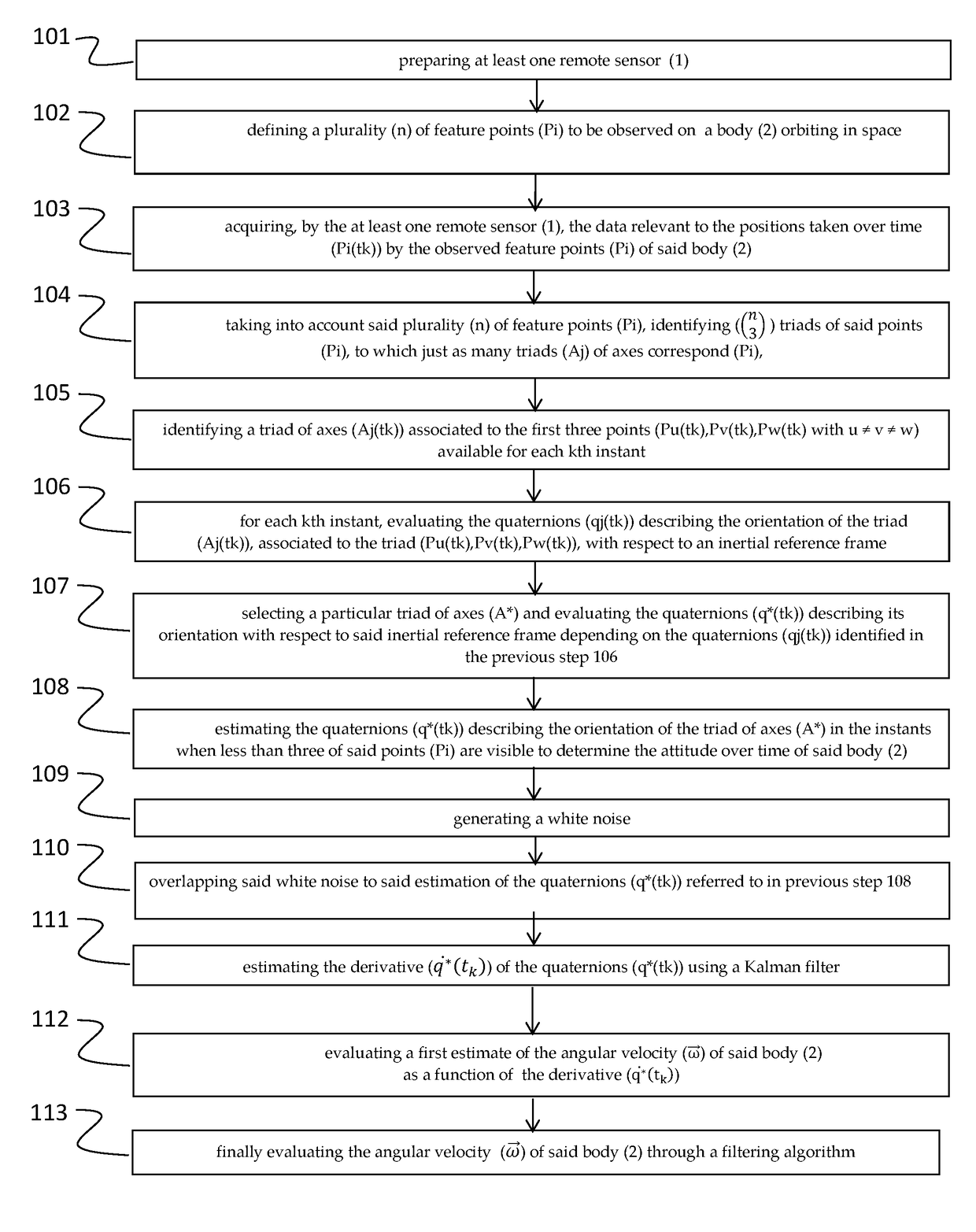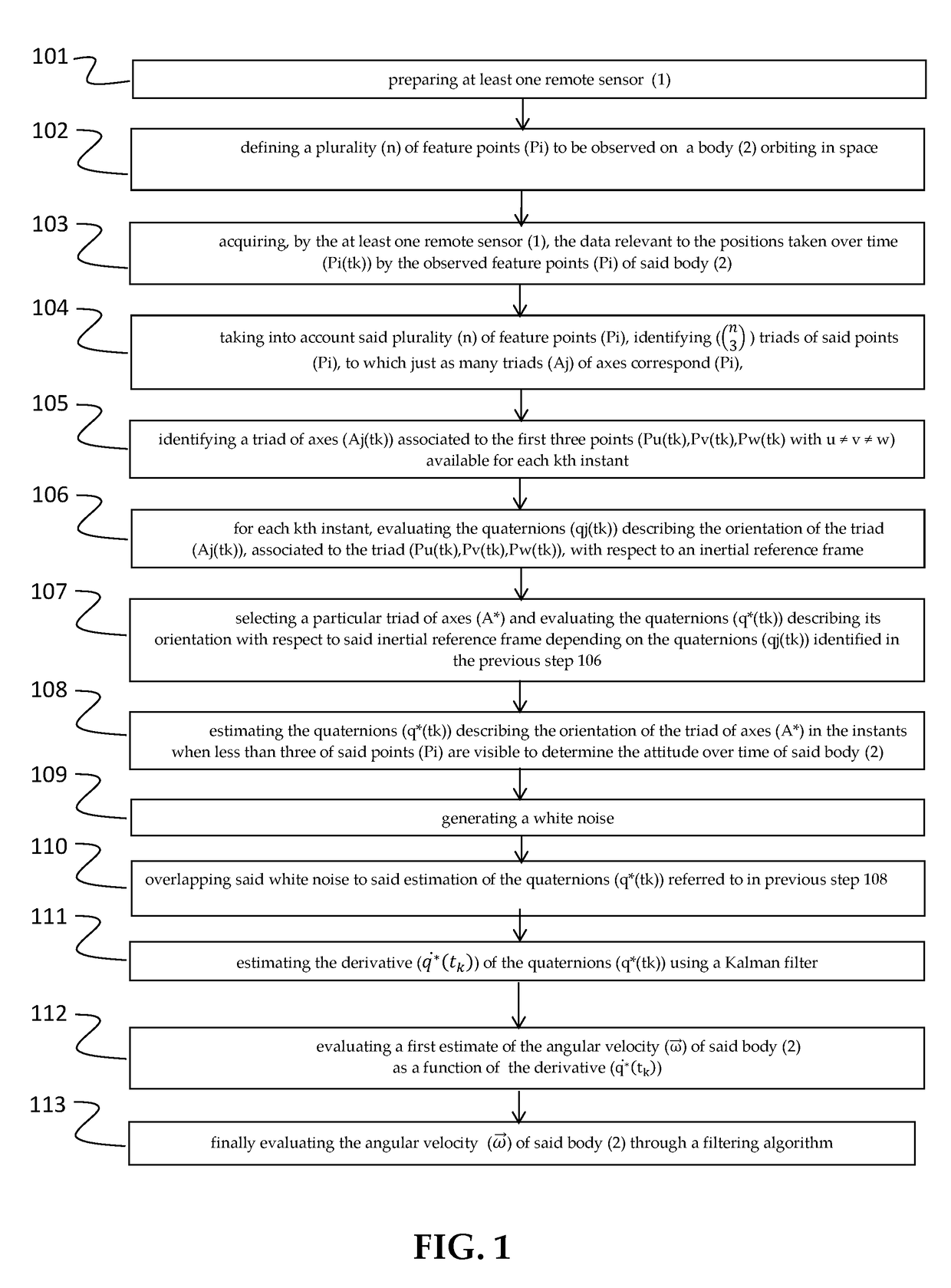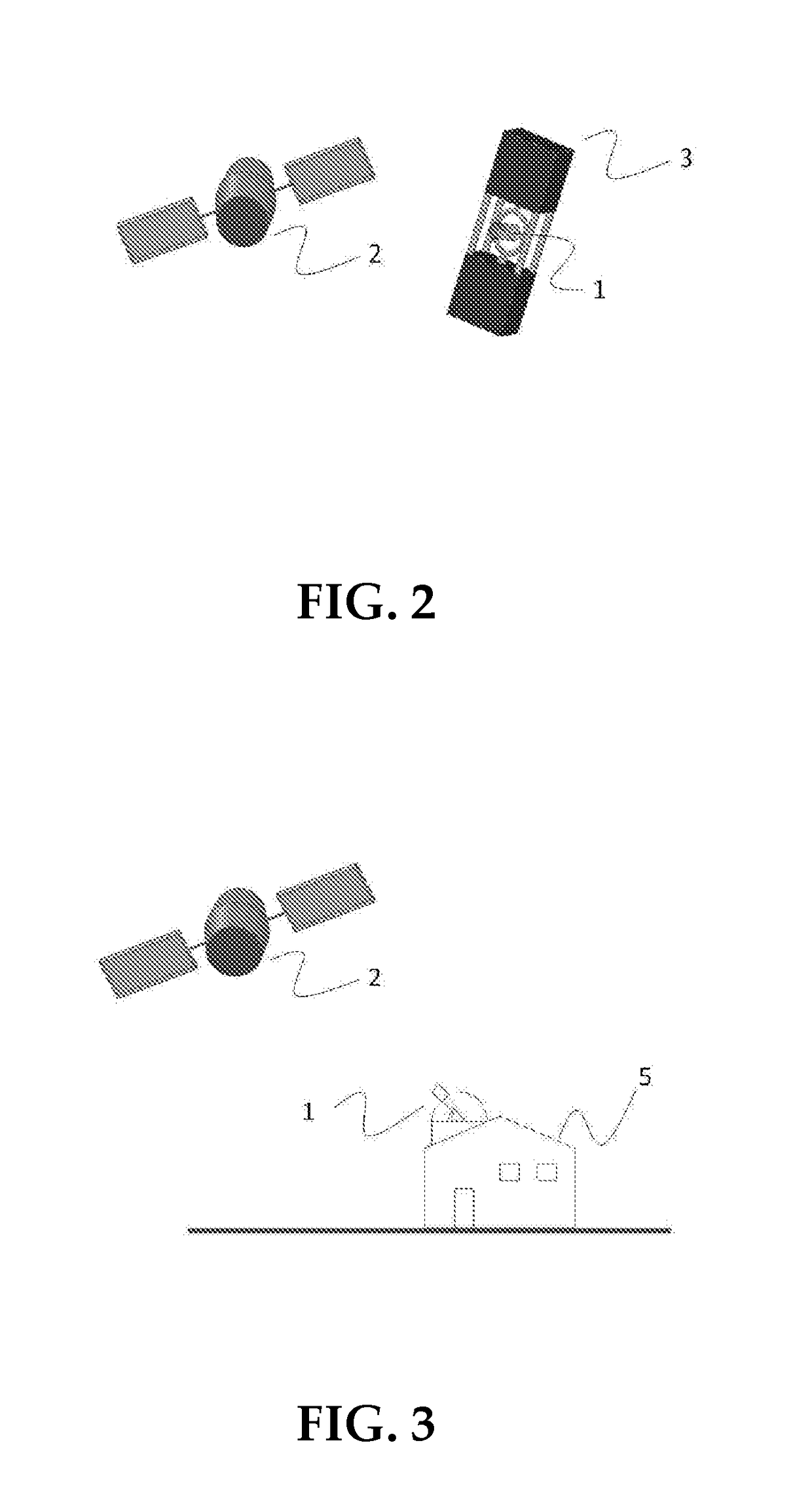Method and system for measuring the angular velocity of a body orbiting in space
- Summary
- Abstract
- Description
- Claims
- Application Information
AI Technical Summary
Benefits of technology
Problems solved by technology
Method used
Image
Examples
example
[0117]Measurement of the angular velocity of a body 2 orbiting in space by means of a remote sensor 1 installed on board a spacecraft 3.
[0118]The body 2 orbiting in space has five feature points whose Euclidean coordinates are listed with reference to a principal central inertial reference frame:
P1[4.00 0.00 0.00]mP2[−5.71 0.00 −0.81]mP3[−3.91 0.00 1.42]mP4[−3.97 1.02 −1.02]mP5[−7.61 0.00 0.00]m
[0119]The orbit of said body 2 orbiting in space is defined by the following ephemerides:
e 0.55i 6.93°ω146.40°Ω132.20°h544.00 kmθ0349.90°
[0120]Where e is eccentricity, i orbit inclination, ω the argument of perigee, Ω is the longitude of the ascending node, h is height at perigee and θ0 is the true anomaly at instant t0.
[0121]The initial velocity of the body expressed with respect to the b frame is:
b{right arrow over (ω)}0=[0.17 0.01 −0.29]rad / s
[0122]The principal moments of inertia of said body 2 are:
bI=[22435 18430 13420]kg m2
[0123]The body 3, on which the sensor 1 is placed, is controlled...
PUM
 Login to View More
Login to View More Abstract
Description
Claims
Application Information
 Login to View More
Login to View More - R&D
- Intellectual Property
- Life Sciences
- Materials
- Tech Scout
- Unparalleled Data Quality
- Higher Quality Content
- 60% Fewer Hallucinations
Browse by: Latest US Patents, China's latest patents, Technical Efficacy Thesaurus, Application Domain, Technology Topic, Popular Technical Reports.
© 2025 PatSnap. All rights reserved.Legal|Privacy policy|Modern Slavery Act Transparency Statement|Sitemap|About US| Contact US: help@patsnap.com



